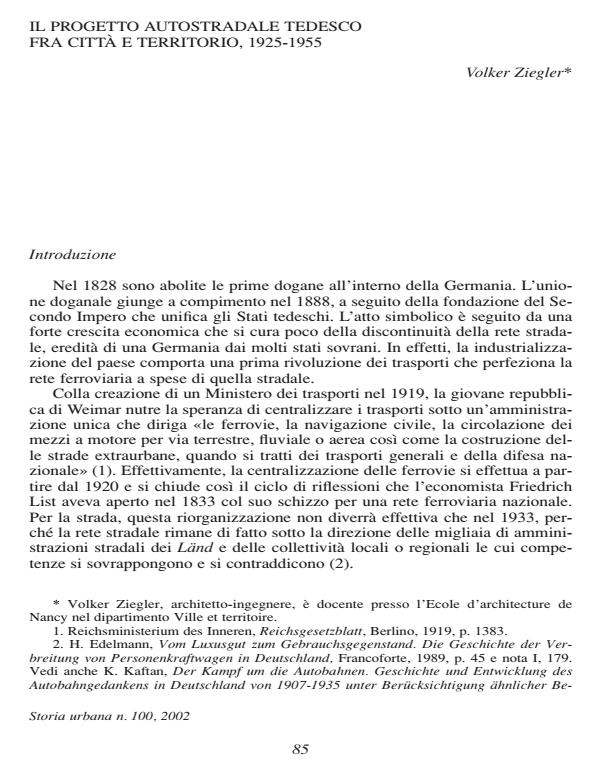Il progetto autostradale tedesco fra città e territorio: 1925-1955
Titolo Rivista STORIA URBANA
Autori/Curatori Volker Ziegler
Anno di pubblicazione 2003 Fascicolo 2002/100
Lingua Italiano Numero pagine 35 P. Dimensione file 1175 KB
DOI
Il DOI è il codice a barre della proprietà intellettuale: per saperne di più
clicca qui
Qui sotto puoi vedere in anteprima la prima pagina di questo articolo.
Se questo articolo ti interessa, lo puoi acquistare (e scaricare in formato pdf) seguendo le facili indicazioni per acquistare il download credit. Acquista Download Credits per scaricare questo Articolo in formato PDF

FrancoAngeli è membro della Publishers International Linking Association, Inc (PILA)associazione indipendente e non profit per facilitare (attraverso i servizi tecnologici implementati da CrossRef.org) l’accesso degli studiosi ai contenuti digitali nelle pubblicazioni professionali e scientifiche
This article looks at German manifestations of modernization during the complex historical period running from the end of the First World War to the beginning of the Cold War. Taking into consideration that one of the most potent of symbols of modernization was the car, it explores the history of arterial roads in Germany, given its decisive role in the transformation of the city and the countryside. Due to its complex nature, the phenomenon of the arterial road was necessarily at the core of interaction between social, political, economical, strategical planning and formal interests that determined nearly every construction project during that period, regardless of its scale. However, it is essential to take into account the interaction between project cycles and political cycles, each with its own time-frame: during the period of the Weimar Republic, highway planning and regional planning arose in a common context determined by cities’ economical matters rather than national policies. The influence of Italy’s autostrade on German highway planning evidently stretches from those initial projects to the Nazi decade which saw the realization of the Autobahn, Volkswagen, and urban Neugestaltung programs. As a product of centralized state policies, characterized by their implicit national scale, Nazi projects of the thirties deployed all conventional means of spatial intervention: architecture, engineering, town planning, regional planning and landscaping. Given the highly contradictory nature of the socio-political climate, industrial and functional aesthetics had to be reconciled with the desire for a return to national roots, to regional nostalgia, or to a monumental classicism. Having been depleted of this symbolism during the reconstruction period following WW II, arterial roads became a constitutional part of new urban landscapes and reorganized the cities in anticipation of the German economical miracle.
Volker Ziegler, Il progetto autostradale tedesco fra città e territorio: 1925-1955 in "STORIA URBANA " 100/2002, pp , DOI: